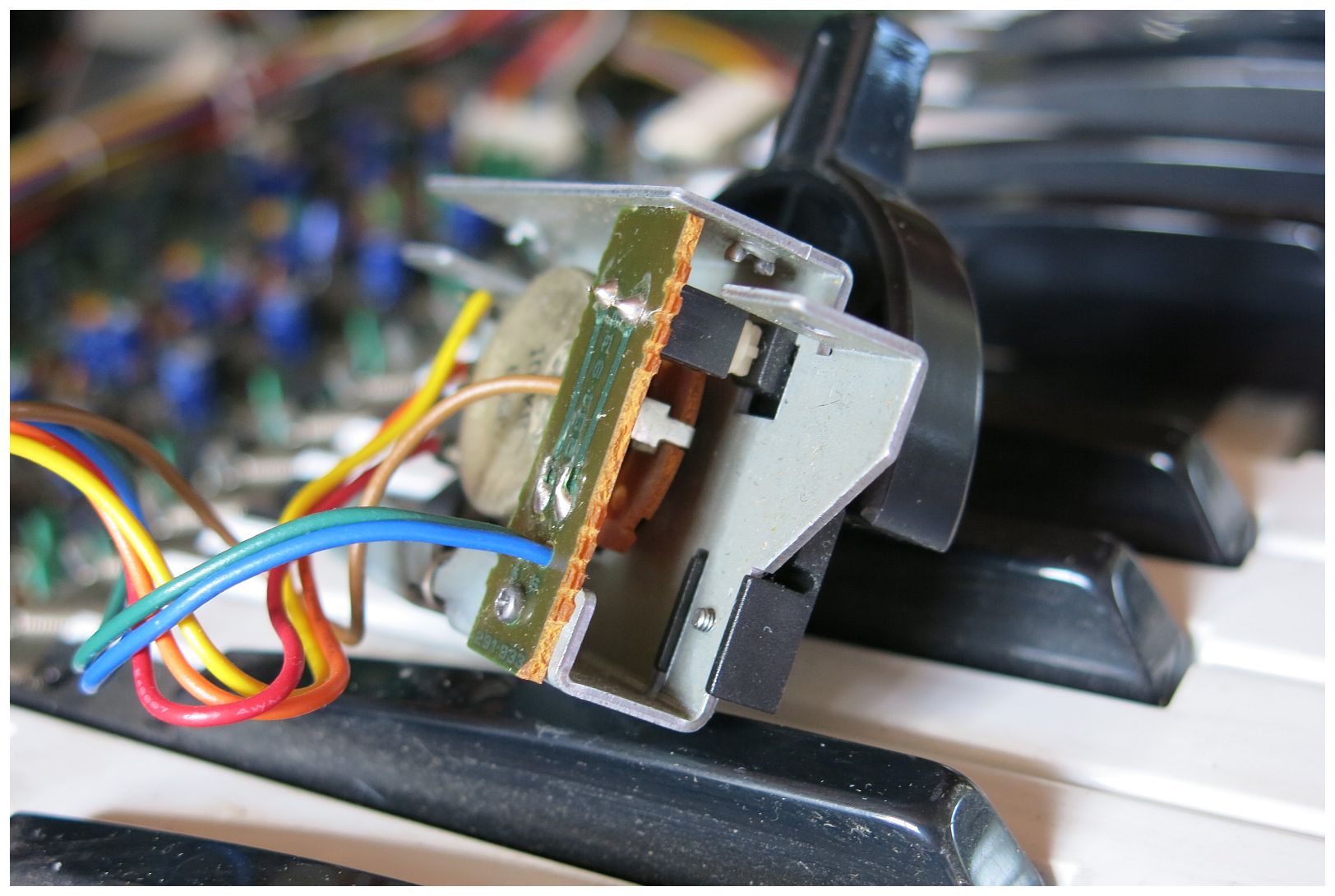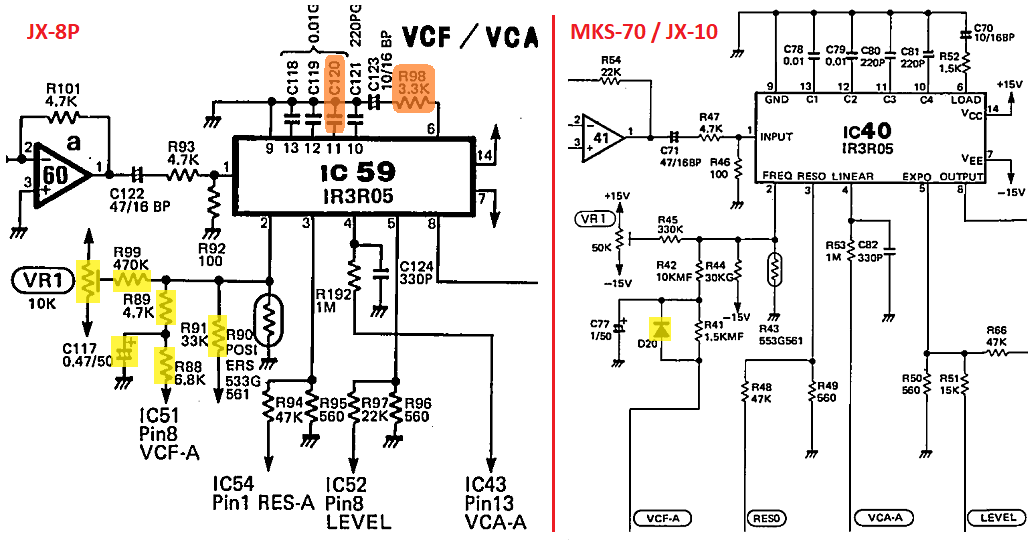
jx10/Super_JX-10_016.jpg
To view high resolution images, right click on image and select View image or Save image
Some people seams to dispute Roland’s marketing buff telling us Super JX (MKS-70/JX-10) are two JX-8P in one instrument. Reason are they prefer the sound from JX-8 over Super JX which imply there are differences on the hardware. And after reading Eric Persing ‘s comment on the self-oscillating filter in Super JX I got curries to find out the difference in circuit.
Initial findings show differences around the filter chips. Several changes around control functions but as these also are under software control the most interesting parts to look at seems to be the load and filter frequency caps on pin 6 (Load), pin 10 (C4), pin 11 (C3), pin 12 (C2), pin 13 (C1). Cap value for C1, C2 and C4 are identical on all units, leaving pins for C3 and Load to investigate.
Interestingly we find that the MKS-80 from rev5 also use the same IR3R05 Filter/VCA chips and none of the subjects use identical values as it turns out.
Super JX also differ from the JX-8 by it's exponential control of pin 5 (Level) on IR3R05. This signal is generatet from summed audio of all 6 voices after the HPF and are mixed with CV controll though a 47k resistor (R66).

Update 5-2019 — From mail conversation with Fred Vecoven currently migrating his JX-10 v3 firmware for use on in the JX-8P I learned the original code for filter control are identical for both JX8 and JX-10. Implying JX-8P will not get self oscillating filters from new firmware alone.
| C3 pin 11 | Load pin 6 | |
|---|---|---|
| JX-10 | 220pF | 1K5/10uF |
| JX-8P | 10nF | 3K3/10uF |
| MKS-80 rev5 | 10nF | 3K3/47uF |
The JX synthesizers employ a four-pole lowpass filter, which rolls high frequencies off at a rate of 24dB per octave. There is a slight difference between the maximum resonance amount setting in the JX-8P and the JX-10. When pushed to its upper limit, the filter in the JX-10 will oscillate producing a sine wave, but this effect is not possible on the JX-8P. Eric Persing, Keyboard Magazine Oct 1986

Further dive into the schematics we learn that after the audio signal leaves the VCF all 6 voices on each module board are summed through an op-amp and then passed to the select-able HPF where filter values for all three position are identical for both JX-8 and JX-10.
Signal are then split for chorus bypass and entering the chorus circuit where both JX-8/10 make use of the MN3009 / MN3101 combination. With minor difference to the oscillation control circuit for BBD driver MN3101 main difference seems to be use of op-amps (M5218P) in JX-10 for low pass filters before and after the MN3009 BBD, — as opposed to discrete transistor circuits in JX-8P.
Limiter before the LPF in front of the chorus found in JX-8 are not duplicated to the JX-10, — use of exponential control of the IR3R05 level might have made it obsolete?
From the chorus circuit audio signal now enter the master volume VCA. For JX-10 this is a integrated logarithmic VCA M5241L whereas the JX-8 use a dual transistor 2SA798G with an op-amp (probably M5218). For JX-8 output are taken direly from this op-amp while the JX-10 has a dedicated output driver (M5218L) after the VCA chip.
On a side note the Mono Total Mix output on JX-10 are summed after the headphone amplifier with option to pad down the mono signal with a three positions switch. For JX-8 this switch will pad down the stereo output.

jx10/Super_JX-10_016.jpg
To view high resolution images, right click on image and select View image or Save image
Select file from list below
DCO explained: https://www.youtube.com/watch?v=mqY6cVJS9fo
First MIDI upgrade for JX-10 with technical information: http://www.colinfraser.com/jx10/jx.htm
Firmware 3.xx/4.xx: http://www.vecoven.com/superjx/superjx.html
Your comment are welcome